Who doesn't love a steaming hot plate of Cantonese-style chow mein? This traditional Asian dish is incredibly satisfying and beloved by lots of people. If you're a fan of Chinese cuisine, you've likely encountered the Cantonese Style Chow Mein. In this post, I will introduce you to the key ingredients and simple steps to create an authentic Cantonese-style chow mein meal. Get ready to discover the secrets to making the perfect plate of Cantonese-style chow mein!

Jump To
- What exactly is Cantonese-style chow mein
- Differences between "Chow Mein" (stir-fried noodles) and "Lo Mein" (tossed noodles)
- The main ingredients
- Step-by-step cooking instruction
- Variations and customizations for Cantonese style chow mein
- Final thoughts
- Cantonese Style Chow Mein: Easy Pan-Fried Noodles
- YOU MAY ALSO LIKE
What exactly is Cantonese-style chow mein
Have you ever visited a Chinese restaurant and seen Cantonese-style chow mein on the menu? Or, have you heard about this type of chow mein before but aren’t quite sure what it is? Chow mein is a Chinese stir-fried noodles dish. It is a perfect example of the delightful flavors and textures found in Chinese cuisine. "Chow mein" translates to "fried noodles" in English. The dish typically consists of stir-fried noodles with a variety of vegetables or a choice of meat.
Differences between "Chow Mein" (stir-fried noodles) and "Lo Mein" (tossed noodles)
Lots of people confuse chow mein with lo mein. They are both popular Chinese dishes featuring noodles, but they are different in their preparation and presentation:
Noodle type:
- Chow mein: The noodles used in Chow Mein are often egg noodles that are stir-fried until crispy. They can be thin or thick, and the cooking method gives them a slightly crispy texture.
- Lo mein: Lo Mein, on the other hand, uses soft, boiled noodles. These noodles are usually thicker and rounder than those used in Chow Mein and are not fried.
Cooking method:
- Chow mein: The key characteristic of Chow Mein is that the noodles are stir-fried. This gives them a slightly crunchy texture. The other ingredients, such as meat, vegetables, and sauce, are also stir-fried.
- Lo mein: Lo Mein means "tossed noodles." The cooked noodles are tossed with the other ingredients and sauce in the wok, but they are not stir-fried to a crispy texture. This results in a softer, more noodle-centric dish.
Texture and flavor:
- Chow mein: The stir-frying process imparts a crispy texture to the noodles, and the dish often has a slightly stronger, more concentrated flavor due to the high heat used in the cooking process.
- Lo mein: The noodles in Lo mein remain soft, and the dish tends to have a milder, more noodle-forward flavor as the noodles are the central focus.
Long to short, Chow Mein has crispy stir-fried noodles, while Lo mein noodles are soft and tossed.
The main ingredients
Before we dive into the cooking process, let's take a look at the main ingredients you'll need for Cantonese Style Chow Mein:
Chow mein noodles: Chow Mein typically uses Chinese egg noodles; they are the stars of the show. These noodles are made with wheat flour and eggs, giving them a yellow color and a slightly chewy texture. In Chow Mein, these thin noodles are often stir-fried until they become crispy, providing a contrast in texture to the other ingredients in the dish. You can find chow mein noodles in any Asian grocery store.

Soy sauce mixture: The role of the sauce is to add depth and flavor to Cantonese-style Chow Mein. The sauce includes light soy sauce, dark soy sauce, Shaoxing wine, oyster sauce, water, and sugar. This flavorful sauce enhances the overall taste of the dish.
Mung bean sprout: Mung bean sprouts are commonly added to Chow Mein for their texture and crunch. Mung bean sprouts naturally contribute a refreshing crunch to the dish. They have a crisp and slightly juicy texture, providing a contrast to the chewiness of the stir-fried noodles. Overall, mung bean spouts are light and fresh and can lighten up the dish's overall taste. This is particularly important in a stir-fried dish like Chow Mein. Feel free to add other vegetables, such as bok choy, napa cabbage, snow peas, and bell peppers.
Green onion pieces: Green onions provide extra aromatic flavor to your dish. Remember to cut them into 2-3 inch pieces.
Cooking oil: You'll need regular vegetable oil for the cooking process.
Salt and black pepper: to taste
Sesame oil: It is optional.
Step-by-step cooking instruction
Bring a large pot of water to a boil. Once it's boiling, add the dried Chinese egg noodles and cook according to the package directions until they are al dente. This usually takes about 1 minute.
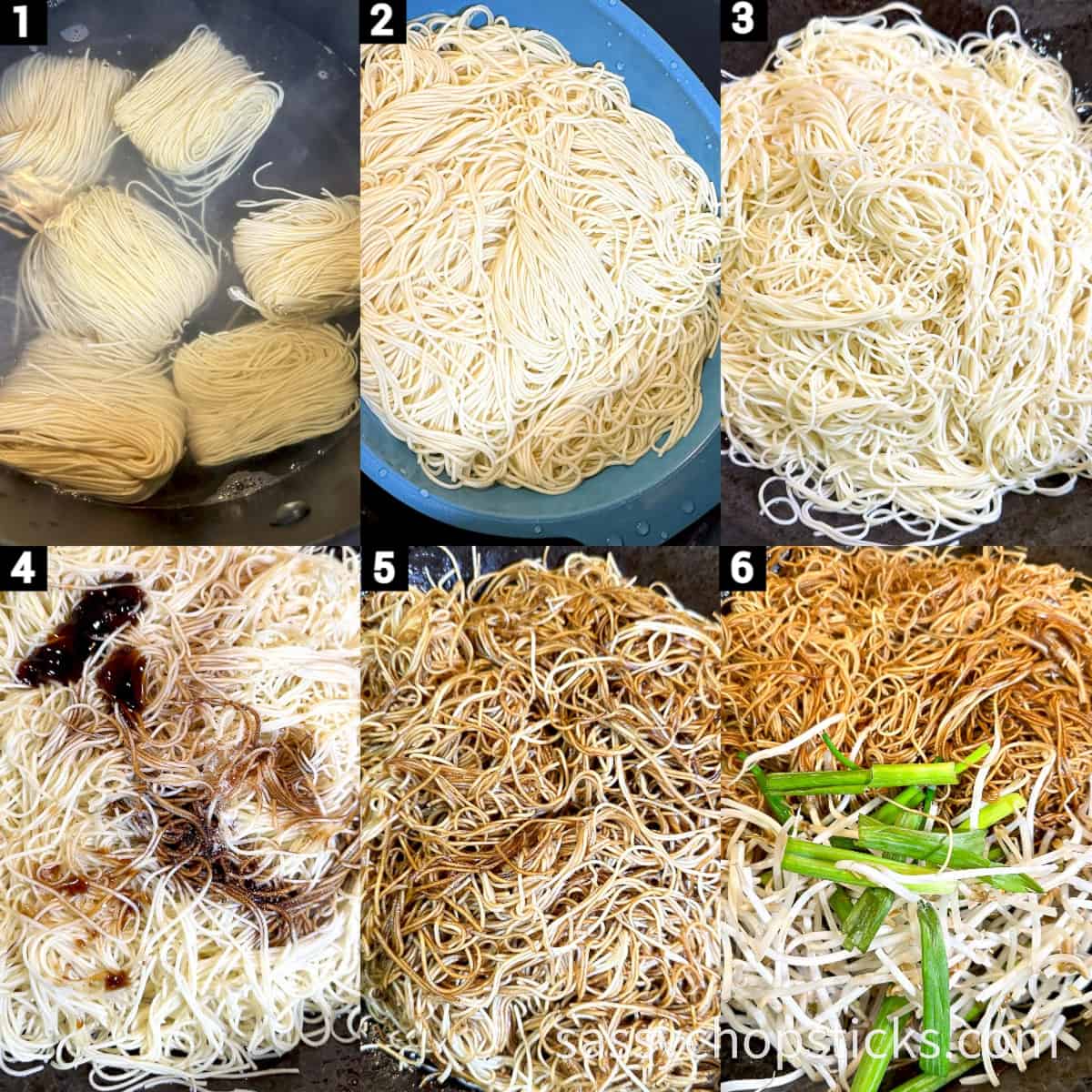
Drain the noodles from hot water and rinse them with cold water to stop the cooking process. This helps to achieve the desired texture for your chow mein.
In a large wok or skillet, heat oil over medium-high heat. Once hot, add the boiled and drained noodles. Gently pan-fry them until they become nicely golden brown and crispy.
Pour in the soy sauce mixture, including light soy sauce, dark soy sauce, oyster sauce, sugar, water, Shaoxing wine, and sesame oil. (optional). Use a pair of tongs to gently stir fry the noodles with the savory sauce together, ensuring that the sauce coats all the ingredients evenly, about 2-3 minutes.
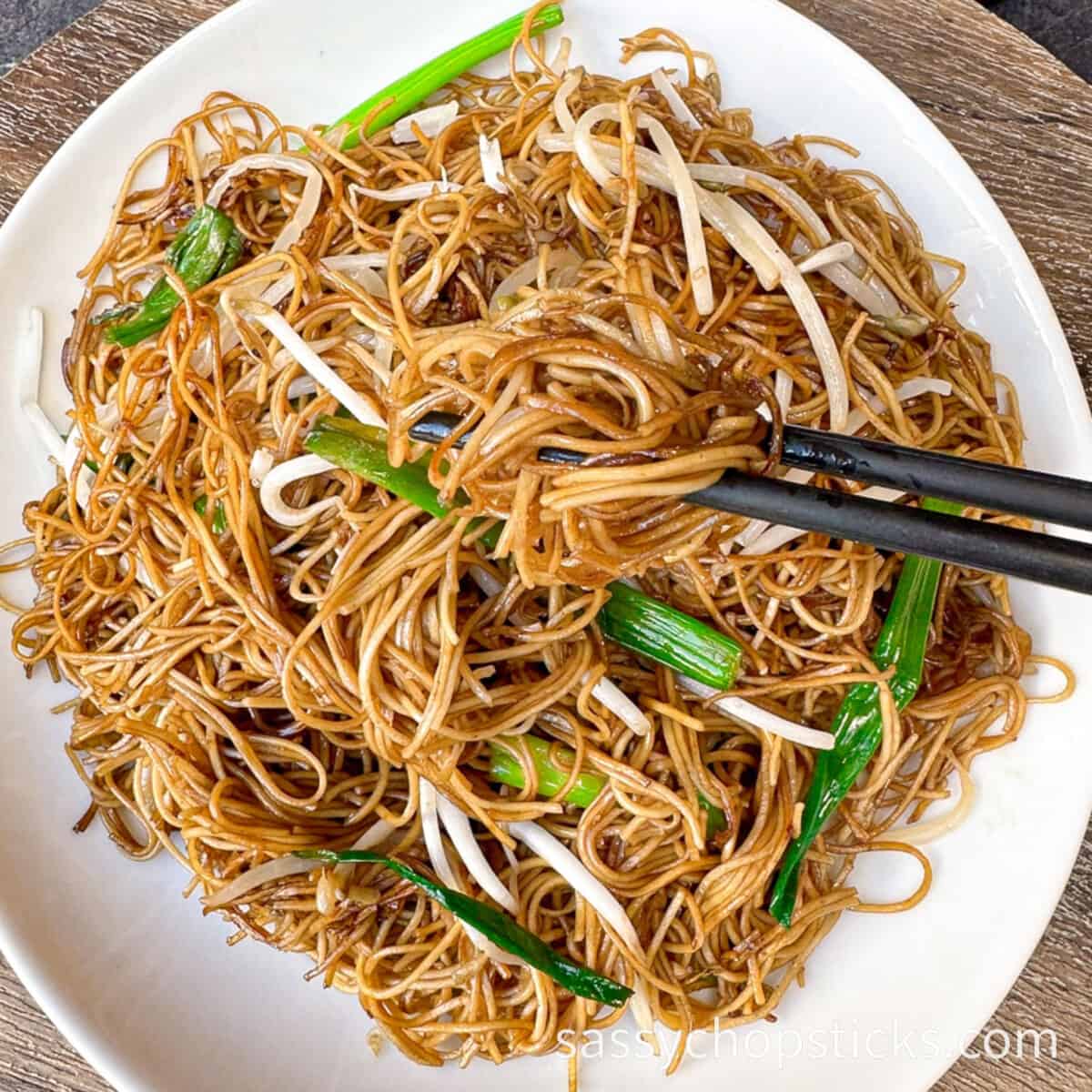
Lastly, add the fresh mung bean sprouts and green onion pieces. Stir-fry for an additional 1 minute until the vegetables are tender-crisp. Salt and pepper to taste.
Transfer your delicious Cantonese-style Chow Mein to a plate. Serve hot and enjoy!
Variations and customizations for Cantonese style chow mein
When it comes to Cantonese-style chow mein, the variations and customizations are endless. For a classic version of the dish, you can add Chinese barbeque pork, shrimp, beef, or any other type of meat. For a vegetarian option, experiment with additional ingredients like mushrooms, carrots, water chestnuts, bamboo shoots, and other vegetables. To spice it up, add chili peppers or other types of hot peppers. To make it healthier, reduce the oil used, or opt for low-sodium soy sauce. Have fun with your creativity in the kitchen.
Final thoughts
I hope you enjoyed this post about the Cantonese style chow mein. With its classic egg noodles, lightly stir-fried vegetables, and flavorful sauce, chow mein has remained a classic favorite for many families. With this easy recipe, you can enjoy the unique flavors of Cantonese-style Chow Mein anytime. It's a wonderful way to bring the tastes of Chinese restaurants right to your dining table! Let me know how your Cantonese-style chow mein turned out. Happy cooking!
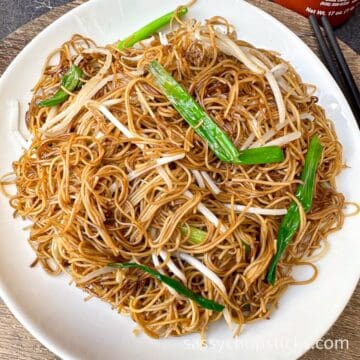
Cantonese Style Chow Mein: Easy Pan-Fried Noodles
Ingredients
- 2 cups dried chow mein
- 1 tablespoon light soy sauce
- 1 tablespoon dark soy sauce
- 1 tablespoon oyster sauce
- 1 teaspoon sugar
- 2 tablespoons water
- 1.5 cup mung bean sprout
- 3 tablespoons cooking oil
- 1 cup green onion pieces cut to 2-3 inches pieces
- 1 tablespoon Chinese Shaoxing wine
- salt and black pepper to taste
- 1 teaspoon sesame oil optional
Instructions
- Bring a large pot of water to a boil. Once it's boiling, add the dried Chinese egg noodles and cook according to the package directions until they are al dente. This usually takes about 1 minute.
- Drain the noodles from hot water and rinse them with cold water to stop the cooking process. This helps to achieve the desired texture for your chow mein.
- In a large wok or skillet, heat oil over medium-high heat. Once hot, add the boiled and drained noodles. Gently pan-fry them until they become nicely golden brown and crispy.
- Pour in the soy sauce mixture, including light soy sauce, dark soy sauce, oyster sauce, sugar, water, Shaoxing wine, and sesame oil. (optional). Use a pair of tongs to gently stir fry the noodles with the savory sauce together, ensuring that the sauce coats all the ingredients evenly, about 2-3 minutes.
- Lastly, add the fresh mung bean sprouts and green onion pieces. Stir-fry for an additional 1 minute until the vegetables are tender-crisp. Salt and pepper to taste.
- Transfer your delicious Cantonese-style Chow Mein to a plate. Serve hot and enjoy!



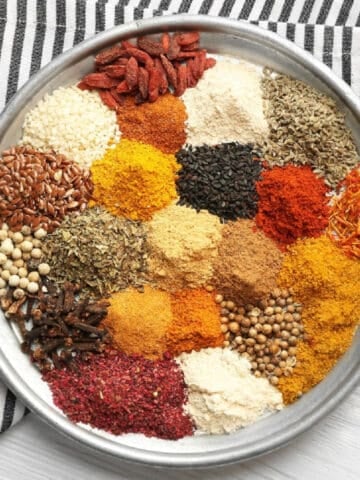
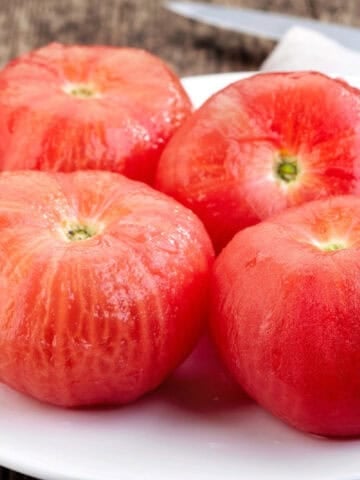
Gloria says
I can't remember the last time we had takeout. No need when you can make this at home. Always a hit with the family.
Sean says
I have been trying to find a recipe like this for ages that was easy to follow and tasted great. This was just what I needed.
Loreto and Nicoletta says
We are toral chow mein lovers! Love how the noodles get crispy, and your sauce sounds lovely. I usually order Chow Mei. From a local restaurant however yours looks so good will have to try it. Very yummy! 😋 ❤️ 😍
Lisa says
No need to get take out anymore when I can make this delicious dish at home. These noodles are so flavorful and good!
Mikayla says
I have always loved Chow Mein. I made this with my kiddos and they now want it all the time.
Lori | The Kitchen Whisperer says
This was so good and so incredibly full of flavor! This is such comfort food on a cool fall evening! Thank you for sharing this!
Dee says
I was so nervous making this chow mein but it turned amazing! Great recipe. Thank you!
Susan says
My husband saw this over my shoulder and said "you've got to make that"! So I'll be making it this week. It looks wonderful. Thanks for all the process shots - that will be super helpful!!
Moop Brown says
Chow mein is one of my favorite take out dishes to order but I like that this recipe allows me to make it on my own.
Krysten says
I recently recreated the Cantonese-style Chow Mein at home, and it was an absolute hit! The classic combination of perfectly cooked egg noodles, lightly stir-fried vegetables, and the flavorful sauce transported me straight to my favorite Chinese restaurant. The dish not only satisfied my cravings for a comforting, steaming plate of chow mein but also proved to be a delicious and nostalgic homemade rendition of this timeless classic.